Encountering a dragon in D&D should be nothing short of epic. Whether your party is trading blows with an elemental force of destruction or negotiating with a being that has watched empires rise and fall, the moment should feel awe-inspiring. In Dragon Delves, you'll come across ten of these legendary creatures in their lairs—each featured in a one-shot adventure designed for characters level 1 to 12.
If you're preparing to run an encounter with a dragon and want to make the most of the dragons' revamped stat blocks from the Monster Manual, this article has everything you need.
- How to Play a Dragon Like a Fearsome Apex Predator
- Devious Dragon Tactics
- A Dragon's Tactical Advantages
Your Ultimate Pass to Draconic Adventure
With the Dragon Delves Ultimate Bundle, you'll receive a D&D Beyond digital copy of the book, a physical copy, the exclusive Ancient Gold Dragon Digital Dice Set, and the Dragon Lairs Digital Maps Pack with 5 digital maps and 10 new stickers for all of your dragon-themed adventures.
How to Play a Dragon Like a Fearsome Apex Predator
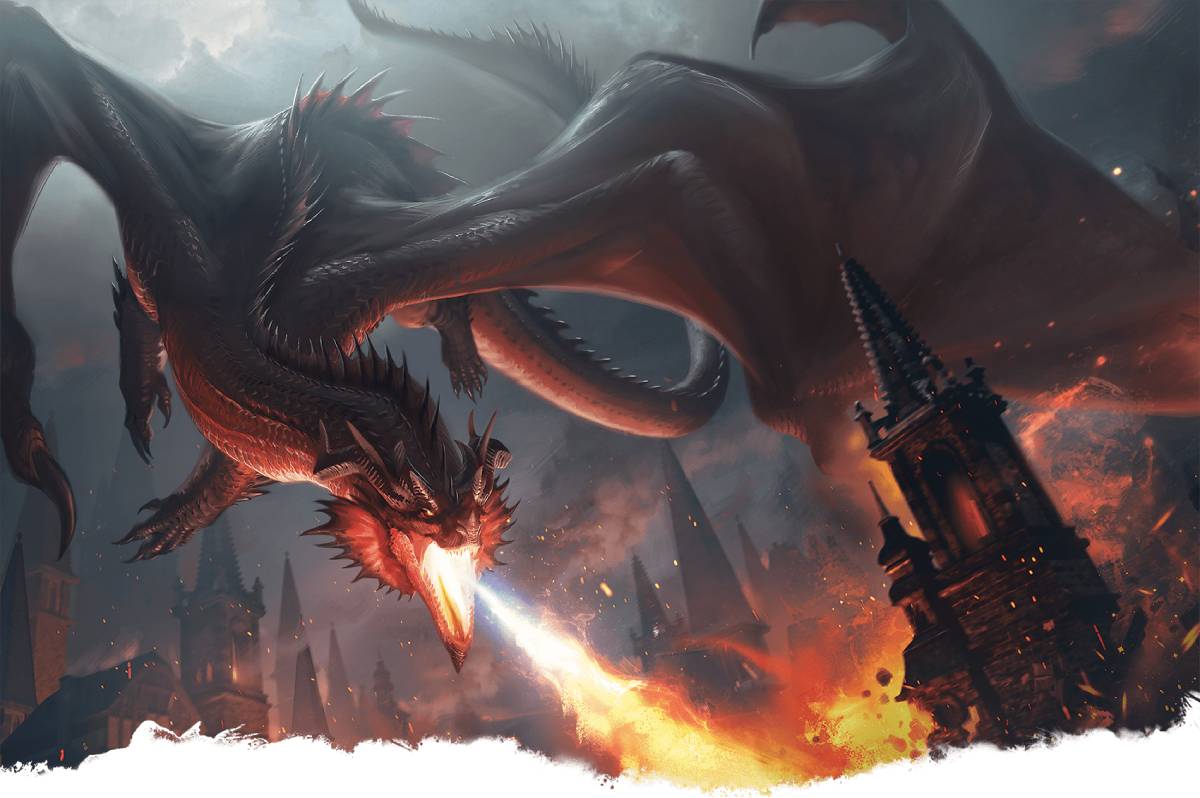
When an Ancient Red Dragon is bearing down on an adventuring party, maw wreathed in flames, and it uses Command to make the party's Paladin grovel before it, the adventurers may feel like they are well and truly cooked.
In the new Monster Manual, elder dragons saw a boost to their power with things like spellcasting, enhanced Legendary Actions, and more Legendary Actions and Legendary Resistances in their lairs.
Now, after the dragon has let loose its breath weapon, it won't need to recharge before it uses more elemental effects to eviscerate its prey. The aforementioned Ancient Red Dragon has the ability to cast a level 3 Scorching Ray at will (even as a Legendary Action) and has access to a devastating level 6 Fireball once per day.
These legendary creatures have been reimagined to evoke the same sense of terror and majesty as the stories describe. Representing a force of both magic and might, they should command the battlefield with overwhelming presence.
Not Every Dragon Encounter is an Epic Battle to the Death
In D&D, there are two main subgroups of dragons: metallic and chromatic. Chromatic dragons tend to be evil-aligned, aggressive, and territorial, whereas metallic dragons are more likely to be good-aligned and engage with potential foes through parley, passive effects, or mutual goals. But, just because a red dragon is domineering doesn't mean it can't be reasoned with—or strike a deal if it suits its ambitions.
The adventures in Dragon Delves explores both sides of this spectrum, offering encounters where dragons might become awesome allies or vicious enemies.
Devious Dragon Tactics
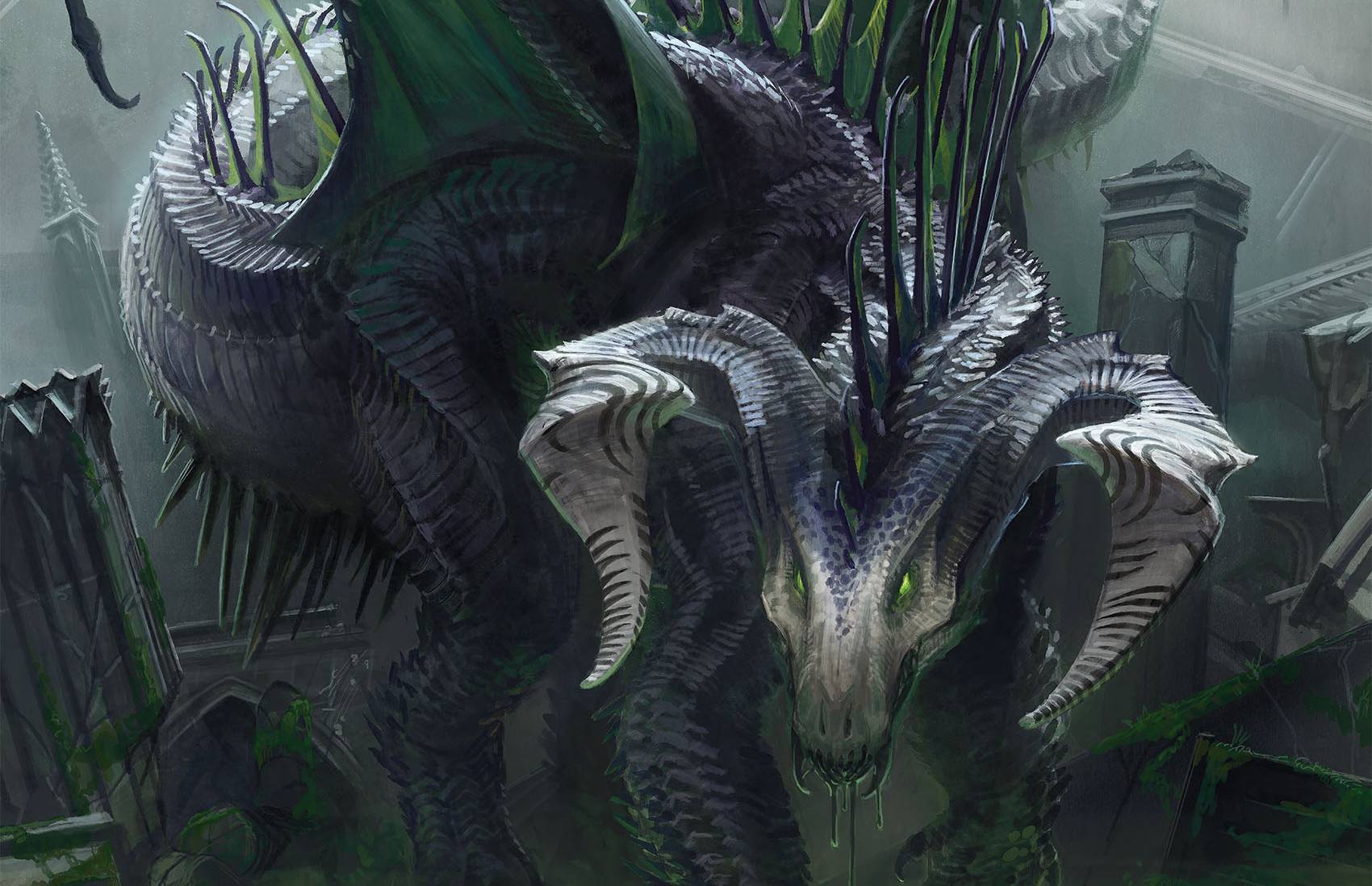
Dragons are extremely intelligent predators who are absolutely lethal when they use their strengths to their advantage. While they have a variety of strategies for disposing of their foes, here are some general tips that can help your dragon live up to its mythically destructive capabilities:
Surprise the Party With a Breath Weapon
A dragon's breath weapon is almost always at its most powerful when unleashed on a group of clumped-up, unaware victims.
But, the scale of a dragon can range from Medium-sized wyrmlings to Gargantuan-sized ancient dragons. How can these older, massive creatures catch enemies off guard?
With a bit of creativity, a dragon can utilize its proficiency in Stealth to remain hidden until it's time to strike.
For example, a white dragon could swoop in on its prey during a blizzard, or a blue dragon could use a lightning storm as cover during its descent. Meanwhile, red and black dragons could be lying in wait to ambush their foes, all but submerged in lava or acid, respectively.
Once the dragon surprises an adventuring party with one breath weapon attack, they may decide to spread out to avoid getting caught in another. But strategic dragons typically won't chase their prey with reckless abandon. Most dragons would not have reached adulthood without knowing that getting caught in the open, surrounded by valiant warriors wielding Dragon Slayers, are some of the biggest threats they face.
Don't Get Surrounded
Dragons rarely want to be on the ground, as it opens them up to attacks from melee-damage dealers. Instead, they want to use their Fly Speed in conjunction with a barrage of deadly ranged attacks, which can easily hand them a victory against a powerful group of adventurers.
For this reason, their lairs are typically big enough to fly around in and have perches for the dragon to gain the high ground and cover over any would-be invaders.
That said, even with their new spellcasting abilities from the Monster Manual, dragons have to take a calculated risk in battle. Outside of their ranged breath weapon, their most reliable source of damage dealing is their Rend attack, which only has a reach of 10 feet.
Luckily for devious dragons, there's an easy way to ensure they can use their Rend attack while keeping a safe distance from the majority of their foes:
Grapple, Fly, Kill, and Repeat
If the party has spread out to avoid getting caught in another breath weapon attack or area-of-effect spell, elder dragons can target prey that is ripe for the picking—literally.
Being Huge or Gargantuan creatures, elder dragons can close the distance on their Medium-sized mark, use an Unarmed Strike and attempt to grapple them, and then use their remaining movement to fly into the air unimpeded.
Once the dragon is in the air, any creature without a Fly Speed or potent ranged attacks won't be able to do much harm to the dragon. The dragon, meanwhile, can use its Rend attacks to make short work of the Grappled creature. Keep in mind that the dragon's Grappled target can still make attacks against the dragon—but a 1v1 with a dragon doesn't produce the best odds.
The dragon can then finish off their captured prey and move on to the next attacker. The cruelest dragons will drop the downed creature near one of the creature's allies, then hit them both with a breath weapon when the ally attempts to aid their companion.
If the target avoids the dragon's grapple attempt, the dragon doesn't want to stick around to let melee enemies close in. Instead, it can take off and use its spellcasting and breath weapon to create another opportunity to grapple a singled-out target.
Grappling With Monsters
Monsters can take any of the actions available to players, so they can use the Attack action to make an Unarmed Strike and choose the Grapple option. But, having access to the Multiattack action does not give monsters more than one shot at grappling per turn. Multiattack is a special action and does not qualify as an Attack action, which means it does not grant multiple attempts to grapple a target.
A Dragon's Tactical Advantages
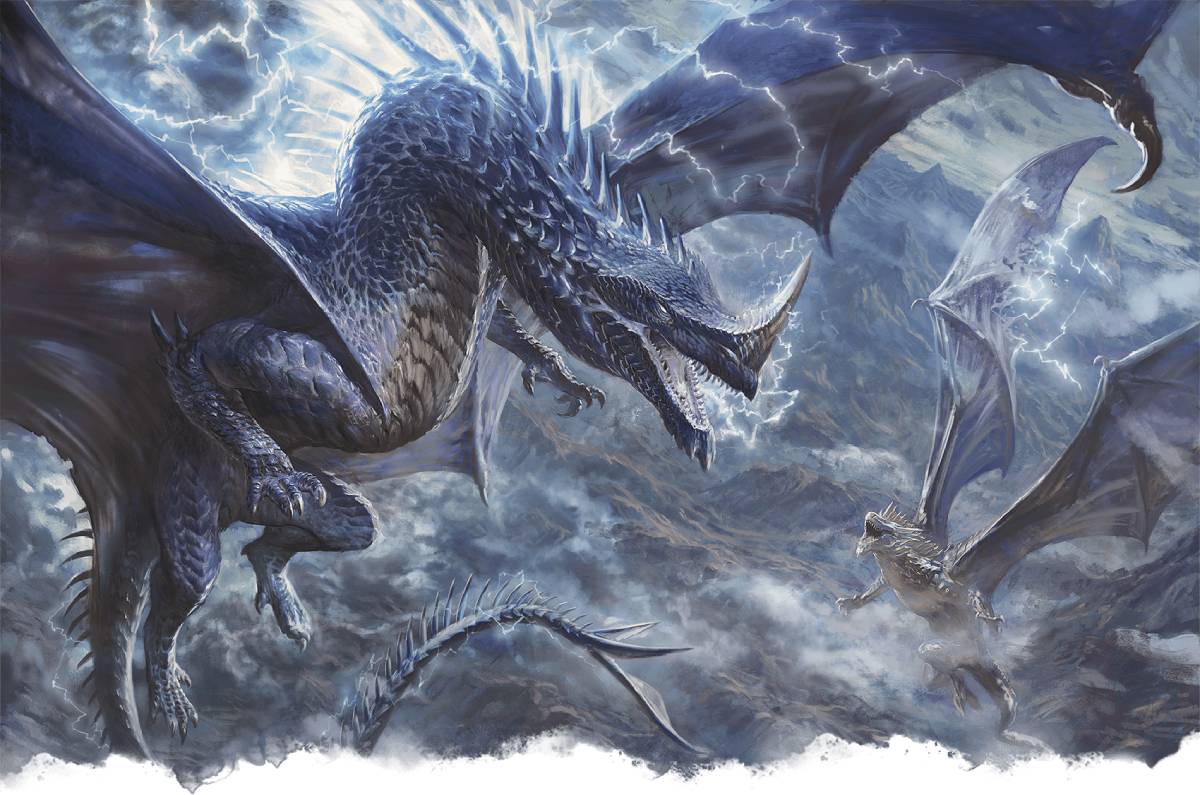
Most dragons have a litany of resources at their disposal to outmaneuver their enemies. When planning an encounter with one of these mythological creatures, it's essential to consider how they will impact the party's journey to and eventual battle with the dragon.
Use Its Environment
All dragons have a unique movement speed that can aid them in battle. Most dragons don't often travel far from their lair, so they should be able to use the advantageous landscape to shape the battle.
- Green and Black Dragons have a Swim Speed, so instead of grappling a creature and flying away, they could instead dive into a swamp or lake and drown their prey at their leisure.
- White and Blue Dragons have a Burrow Speed, allowing them to effectively ambush unsuspecting adventurers.
- Red Dragons have a Climb Speed, which can help them navigate cramped areas where they can't capitalize on their Fly Speed.
Recruit Minions
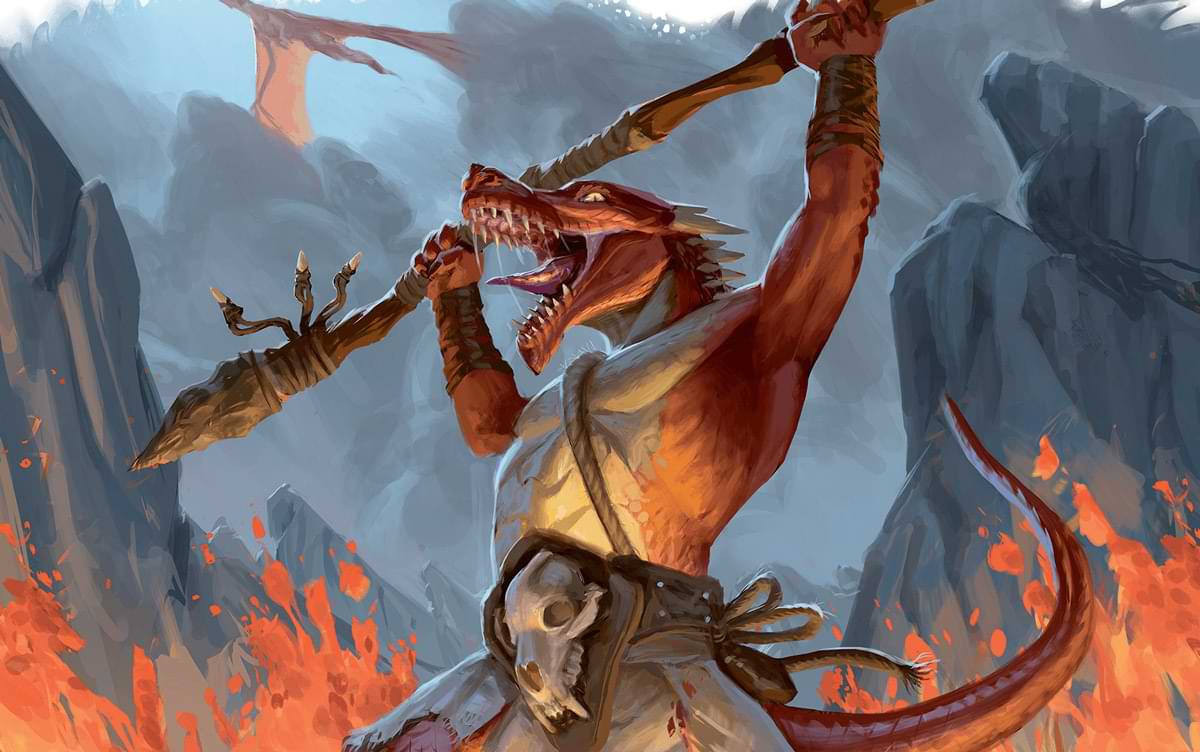
Due to their intelligence, fearsome power, and sense of superiority, most chromatic dragons thrive off being followed and worshipped. This means that most of these beings will have an entourage of expendable cannon fodder at hand to manipulate the battlefield strategically.
Beyond soaking damage in combat, minions can harry party members by getting up close to ranged characters, thereby invoking Disadvantage on ranged attacks. They can also target spellcasters who are maintaining Concentration on a spell to disrupt the effect.
While the most straightforward choice for dragon minions would be Kobolds, there are plenty of other creatures that would find themselves in servitude to a dragon:
- Duskmantles. Due to their propensity to make their lairs in caverns and caves, Darkmantles can serve as excellent minions for dragons. These creatures look indistinguishable from stone, so they can get the drop on creatures that venture into the dragon's lair. When they land a hit, Darkmantles impose the Blinded condition on their foes by engulfing their heads, making them easy targets for the dragon. Even if they miss their initial ambush, the Darkmantle's Darkness Aura ability is wickedly combined with the dragon's Blindsight.
- Mimics. These creatures make for an excellent trap in a dragon's lair, and dragons know it. Because they can shape-shift to resemble Small or Medium objects, a dragon could convince multiple mimics to disguise themselves as treasure in their hoard. Then, when intruders get greedy and attempt to steal from the dragon, they're instead Restrained by the mimic's Adhesive trait. From there, the dragon is free to use its breath weapon on the trapped, would-be thieves.
- Thematic Minions. Elder dragons may bring even more powerful beings that suit their needs. For example, black dragons often gather morbid necromancers to create armies of Undead, whereas red dragons can command the respect of forces from the Elemental Plane of Fire or Lower Planes.
Tap Its Superior Senses
Most dragons have Blindsight, the innate ability to perceive their surroundings without physical sight. When used strategically, this single ability can sway an encounter with even the most hardened adventurers. Being intelligent beings, dragons will know that most creatures rely on their sight in battle and will prepare something to obstruct their enemies' sight in their lair or surrounding region.
Elder black, blue, red, and white dragons already have regional effects that can cause areas surrounding their lairs to become Lightly Obscured. But, if their lairs get invaded, they may have ways to make an area Heavily Obscured to blind other creatures. Maybe a green dragon cultivates mushrooms that release poisonous, obscuring spores within their lair, or a red dragon uses volcanic vents to fill the chamber with an acrid haze.
Once creatures are trapped within the area and have no way to see, the dragon can swoop in and tear its prey apart with ease.
Know When to Retreat
Dragons are tactical, self-serving creatures that know if a battle is lost. If a dragon is Bloodied before it kills a substantial portion of the opposing force, it would likely retreat unless it has something significant to protect.
In their lairs, most dragons plan ways to escape with their Fly Speed and usually prepare another emergency exit that plays to their strengths. For example, red dragons might have a tunnel full of lava they can flee into, whereas black dragons might have a pool of acid that leads away from their lair.
Adventurers who allow a dragon to escape need to be wary. Dragons are vain creatures that might plot vicious retribution upon those who thwart them. This vengeful nature, combined with their intelligence, means that dragons will devise new battle plans for subsequent encounters with the party.
Tip the Scales In Your Favor
Dragons deserve to be a force of nature in a game named after them. These tips will help you create a dragon encounter that bards will sing of for generations!
Do you want ten ready-to-run adventures that feature dragons? With the Dragon Delves Ultimate Bundle, you'll receive a digital and physical copy of the book, the exclusive Ancient Gold Dragon Digital Dice Set, and the Dragon Lairs Digital Maps Pack—complete with five breathtaking maps and ten dragon-themed stickers.
Mike Bernier is the founder of Arcane Eye, a site focused on providing useful tips and tricks to all those involved in the world of D&D. Outside of writing for Arcane Eye, Mike spends most of his time playing games, hiking with his partner, and tending the veritable jungle of houseplants that have invaded his house.
This article was updated on May 30, 2025.








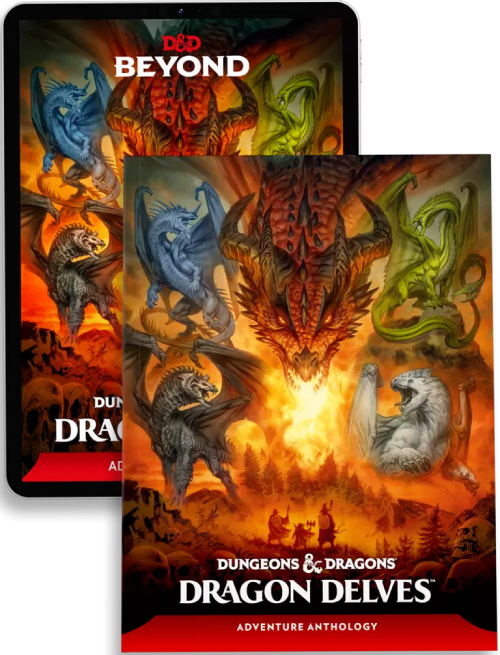
-
View User Profile
-
Send Message
Posted Sep 23, 2022It's important to make the encounter very unlike the swarm of zombies or the angry owl bear that pretty much allows for a party to wail away with abandon. Water/swamp and black dragons are a must. If your players are biding their time and baiting the dragon into a volley of arrows or melee fine, otherwise fly away/swim away, recharge the breath weapon and reengage.
For any adult or larger dragon, snatching the paladin and flying to 20d6 of fall damage is just deserts for expecting to square off in a "fair" fight. Held actions and attacks of opportunity during these dive bomb attacks might be the only opportunity for the party to get clean licks in. A young dragon would probably need a strength check, at least for the fully armored tank, a halfling not so much.
You might want to declare at the start of a combat how a dragon is successful in an attempted grapple, or at the first attempt by the dragon. Hit on a bit, clutched in the jaws, both claws, fully restrained; one claw, maybe be allowed to attack with anything but a small weapon with disadvantage, a dragon grappling would probably only try one of those things against one target, let the dice fall where they may.
The old 3.5 Dragonomicon has a lot of rules for a dragon's "dirty tricks." I wish 5e Fizban's would have included a few more.
-
View User Profile
-
Send Message
Posted Sep 23, 2022You don't have to. The Dragon only needs to do enough to get away. They like staying alive, and much like the Beholder, have enough intelligence to know that parties of adventurers are their number one threat.
If they do enough damage, the Dragon might be able to use that to run away - not every encounter has to be to the death. It's also OK for a party of low to mid levels to encounter powerful dragons, that dragon will know that those low levels may one day become high levels. A recurring Dragon NPC can be a source of future adventure ideas.
-
View User Profile
-
Send Message
Posted Sep 24, 2022yeah- it's for spellcasting white dragons
-
View User Profile
-
Send Message
Posted Sep 26, 2022The only thing I would have added is that it’s totally okay to allow the party to get opportunity attacks on the dragon while it does “hit and run tactics,” as long as it ends it’s turn outside of the reach of the party’s melee combatants. Getting attacked once as a reaction always beats staying in the melee and being attacked two or more times during the players turns with potential smites, stunning strikes, etc.
Really though this article is awesome! I’ve always ran my dragon fights like this and it puts fear and respect into the players. My more recent dragon encounters have become social encounters with the players taking on quests for a black dragon that was trying to expand it’s territory and for a gold dragon that has woke up from a deep slumber and needs to be reacclimated with its surroundings.
-
View User Profile
-
Send Message
Posted Sep 27, 2022Great article! We've already had one young dragon encounter in the game I'm running, and it went really well, but there'll be many more to come (one of the PCs is closely tied to dragons) and this will definitely further improve the dragon fights!
-
View User Profile
-
Send Message
Posted Sep 30, 2022This is some scary stuff, especially looking at the different mobility options for dragons such as tunnelling...
-
View User Profile
-
Send Message
Posted Sep 30, 2022"Multiattack is a special action and does not qualify as an Attack action, which means it does not grant multiple attempts to grapple a target."
You forgot to add: "unless the DM rules otherwise." :P
One of my house rules is that a creature with the Multiattack action can replace one attack for a grapple or shove, just like player characters with Extra Attack. Opens up a host of combat opportunities, and I had had no issues with that house rule.
-
View User Profile
-
Send Message
Posted Oct 1, 2022If I ran dragons at half the intelligence they possess, my players would get frustrated and think I wasn't playing fair.. and i wouldn't blame them, honestly. What's fun about getting picked up and flown 100 feet into the air and dropped, one by one..
-
View User Profile
-
Send Message
Posted Oct 1, 2022can i help im new
-
View User Profile
-
Send Message
Posted Oct 1, 2022Help with what, exactly?
-
View User Profile
-
Send Message
Posted Feb 25, 2023The section on grappling seems to be contradicting the grappling rules in the basic rules:
I suppose you could split hairs and say "Oh, but it works differently for monsters because they only get the *Multiattack action*, whereas players get a class feature just called *Multiattack* that gives them multiple *Attack actions*." But the distinction seems flimsy to me at best.
-
View User Profile
-
Send Message
Posted May 30, 2025Why was this updated, & not, say, fixes applied to the huge backlog of glitches, bugs, copy edits, as well as a categorized list of such...or pre & post-buyout promises kept?
Why a random old dragon article?
Strange priorities...
Also, no Metallic or Gem Dragon tactics, let alone Solar & Lunar? This couldn't be updated to add those, too?
-
View User Profile
-
Send Message
Posted May 31, 2025thanks would be more helpful if it wasn't $60
-
View User Profile
-
Send Message
Posted Jun 1, 2025Great article! Thanks so much!
-
View User Profile
-
Send Message
Posted Jun 1, 2025This was prioritised because it's relevant to the new dragon book coming out soon. I wouldn't call it strange, but I would call it misguided.
-
View User Profile
-
Send Message
Posted Jun 3, 2025I usually home brew creatures getting a free grapple attempt on a successful hit if two size categories larger than the target. If a bit attack, it usually means being swallwed and suffering even more bad effects. Even making a single grapple flyby can be very effective if there is terrain to block line of sight. Those longbows can sting at crazy ranges, but can't go through solid objects like trees or rocky spires.
-
View User Profile
-
Send Message
Posted Jun 6, 2025My first use in 5E of a dragon was Dragon of Icespire Peak, and it was thoroughly underwhelming. These tactics are going to help convince my players that there's far more danger than their first experience.
-
View User Profile
-
Send Message
Posted Jun 6, 2025Updating an article's phrasing and links is easier than combing through code to find errors in the script. It also relates to the Dragon Delves.
Metallic dragons don't need to have tactics, as they are generally not fought, but would most likely have actics along the line of "incapacitate enemies with the special breath, peacefully return them to their homes," which isn't nearly as fun as "Fly them to the outer atmosphere and DROP THEM GRAHAHAHAHA." Also, Gem, Solar, and Lunar dragons do not have a 2024 version, as far as I know.
-
View User Profile
-
Send Message
Posted Jun 9, 2025Is it possible to save or bookmark articles like this?
-
View User Profile
-
Send Message
Posted Jun 10, 2025Top of the page, look for the "Subscriptions" dropdown.